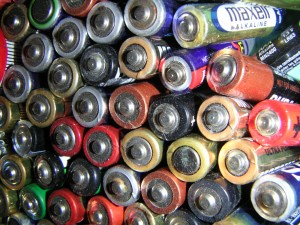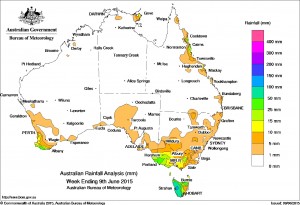By The Metric Maven
Bulldog Edition
When I first discovered batteries as a young boy, I was fascinated, but this feeling would soon turn to disappointment. I had small flashlights, and small toy cars that would quickly drain the batteries, and then the fun was over. I had no way to obtain new batteries, but my father purchased a “home battery charger.” It could hold batteries from AA to D and when they were done “recharging” a neon light would shut off. I very quickly discovered that “recharged” batteries would discharge at such a fast rate that it was almost a waste of time to charge them. I cut open dry cells and other batteries to see what was inside until my curiosity was satisfied.
I encountered batteries again when I was studying for my Professional Engineering (PE) exam. What I learned was there are two kinds of batteries. The first type of batteries are single use. After they have been discharged they cannot be recharged. These are called a primary cells. Primary cells undergo a chemical change which is not reversible. The second type are those that are chemically reversible, and rechargeable. These batteries are called secondary cells. The number of times a secondary cell can be recharged is finite. My PE reference states that:
The cycle life is the number of times a battery can be discharged or charged before the output voltage drops to a prescribed value. A cycle is a predetermined number of amp-hours (A*h) of discharge or charge.
When I first encountered the idea of ampere-hours (amp-hours?–tsk—tsk) it seemed to make sense. I found it quite interesting that primary cells had a lower “service capacity” depending upon the magnitude of current drawn from them:
What this table does not reveal is the total energy extraction possible. To argue that mA*h is an energy term is misleading, this is an energy metaphor. In my view the best way to describe the total available energy in the battery would be in joules. Assuming these are all 1.5 volt cells, then in my view the table should have a third entry:
Energy Capacity (J) Starting Drain Current (mA) Service Capacity (h)
AAA
3132 2 290
2430 10 45
1840 20 17
AA
5670 3 350
3240 15 40
2430 30 15
C
11 610 5 430
13 500 25 100
10 800 50 40
D
27 000 10 500
28 350 50 105
24 300 100 45
One could argue whether the energy capacity should be the final column or the first. The energy values are all in the Kilojoule range, and so could have been written with decimal points to emphasize the magnitude more directly. In a previous blog we see that a common Subway sandwich is around 1000 Kilojoules (six inch sandwiches in Australia?—tsk–tsk–how about Subway “150 sandwiches”?). This provides some context for the energy involved.
One can immediately note that the total amount of energy one can extract from a AAA battery depends on how fast it is drained. One can give up about 41% of the available energy when extracting the energy at a 30 milliwatt rate (30 millijoules/second) versus a 3 milliwatt rate (3 millijoules/second).
Tesla Motors is a company founded by Elon Musk that offers electric cars for sale. Musk has also founded Solar City, and Space X. These companies, especially the last one, are championed as commercial, but the capital involved is largely provided by the public.
Perhaps the most important and costly component of an electric car is the battery. Electric cars were very popular in the early 20th century. Oliver Parker Fritchle (1874-1951) of Denver Colorado offered electric cars and wind power generation in this period. According to Wikipedia:
Fritchle achieved national celebrity for his 1908 Lincoln-to-New York endurance run in one of the first electric automobile models produced by his firm.[5] He covered the 1,800 miles (2,900 km) in a stock Victoria Phaeton achieving as many as 108 miles (174 km) between charges[6] through extremes in weather, terrain, and road conditions; a remarkable feat with an electric vehicle of that day. The trip journal and photographs subsequently published to promote The 100 Mile Fritchle Electric provided unique insight to the state of road and electric power infrastructure within the United States during the early twentieth century.[7]
Fritchle even designed brakes that reclaimed the lost kinetic energy and diverted it into the battery. His car achieved about 100 miles between charges with lead-acid batteries. An attached hydrometer indicated the amount of charge left in the battery. The Tesla Roadster achieves about 244 miles per charge with lithium-ion batteries.
Sven related that Johnny Carson once interviewed Maude Tull, who was a few years over 100 at the time, and Maude recalled how much she liked her electric car. Maude did not believe in charging the battery completely. She left it charged for about thirty miles or so in case someone stole it, they could not get far before the police would catch them.
While Fritchle did not dabble in solar energy in the early twentieth century, Sven pointed out that Edwin Cawston did, using it to power his Ostrich Farm. Aubrey Eneas was the man behind the harnessing of Golden State sunshine and started the Solar Motor Company in downtown Los Angeles. According to the LA Times:
Eneas installed the six-story high apparatus on a sunny hillside in 1901. The device, which resembled a radar dish, was 33 feet in diameter at its widest point and lined with 1,788 mirrors. The mirrors funneled the sun’s rays onto a boiler containing 1,000 gallons of water. The resulting steam was used to power an engine that pumped between 1,400 and 1,500 gallons of water a minute from a deep well on the farm. The dish was attached to a track on a supporting tower so it could be kept trained on the sun.
The monstrous magnifier only heightened the farm’s exotic quality. “No extra charge to see the Solar Motor!,” declared printed handbills. “The only machine of its kind in the world in daily operation! 15-horsepower engine worked by the heat of the sun!”
This introduction has been a prelude to discussing the “newfangled” Tesla Powerwall battery:
This battery is to be used to “Provide energy storage for a sustainable home.” There are two versions of this home battery, one has an “energy capacity” of 10 Kilowatt-hours and the other is 7 Kilowatt-hours. At least we are closer to describing energy than when using Ampere*hours. I must give Tesla some positive prose for giving the metric size of the battery in millimeters (1300 mm x 860 mm x 180 mm). These two values of “energy” in terms of energy are:
10 kWh (36 Megajoules)
7 kWh (25 Megajoules)
In a previous blog I argued that using joules exclusively on energy bills would make them very transparent to consumers. I use both electricity and natural gas in my home. We will just look at my electricity usage for comparison. In the month I used as an example, my usage was about 3.2 Gigajoules of energy for the month. Assuming a 31 day month I use about 103 Megajoules of electrical energy per day or 4.3 Megajoules per hour. This battery would provide my home with just over eight hours of power. This amount of energy is large enough to make it through many power outages, but it is not any type of panacea for the storage of solar energy. A more thorough examination of the Tesla Power Wall has been undertaken by Dan Steingart and may be found here.
The larger point, once again, is that it seems reasonable to use energy to describe energy (joules), and energy flow to describe energy flow (watt = joule/second). People do not describe public water towers in terms of Kiloliter-hours of water, they (if they are refined persons who use the metric system) would describe the water tower capacity in Kiloliters period (2000 Kiloliters for the largest spherical water tower in the US).
The joule, when used appropriately, describes the amount of energy in a sandwich, a battery, my monthly electrical usage, or even the energy of an asteroid strike. The June 2015 issue of Astronomy magazine has an article by Eric Betz entitled To Catch a Shooting Star. This article includes a very nice NASA map of asteroid/meteorite impacts and their associated energy in Gigajoules:
We have an excellent unit of energy that can be used for universal comparison, the joule, it’s just too bad we want to describe our energy in metaphors that masquerade as numerical information, rather than just presenting numerical information and informing ourselves and the public.
If you liked this essay and wish to support the work of The Metric Maven, please visit his Patreon Page and contribute. Also purchase his books about the metric system:
The first book is titled: Our Crumbling Invisible Infrastructure. It is a succinct set of essays that explain why the absence of the metric system in the US is detrimental to our personal heath and our economy. These essays are separately available for free on my website, but the book has them all in one place in print. The book may be purchased from Amazon here.

The second book is titled The Dimensions of the Cosmos. It takes the metric prefixes from yotta to Yocto and uses each metric prefix to describe a metric world. The book has a considerable number of color images to compliment the prose. It has been receiving good reviews. I think would be a great reference for US science teachers. It has a considerable number of scientific factoids and anecdotes that I believe would be of considerable educational use. It is available from Amazon here.

The third book is called Death By A Thousand Cuts, A Secret History of the Metric System in The United States. This monograph explains how we have been unable to legally deal with weights and measures in the United States from George Washington, to our current day. This book is also available on Amazon here.












